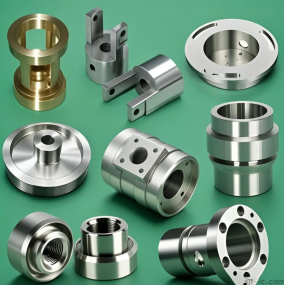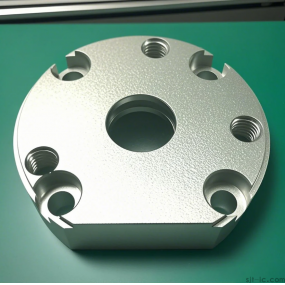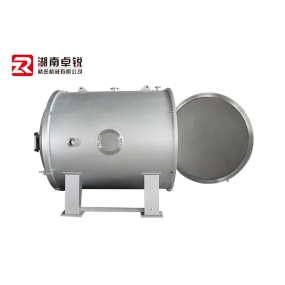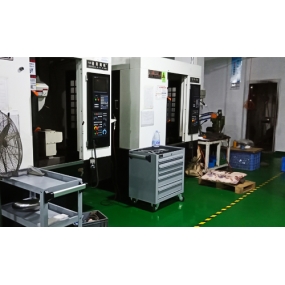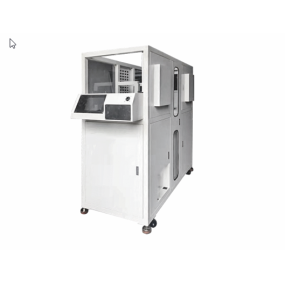Five axis machining is a mode of CNC machine tool machining, characterized by the ability to position and connect workpieces in five degrees of freedom during machining, in order to complete the machining of parts with complex geometric shapes. The machining of five axis parts requires a series of operational techniques to ensure the smooth progress of the machining process and the achievement of machining quality standards. Here are some key operating techniques: 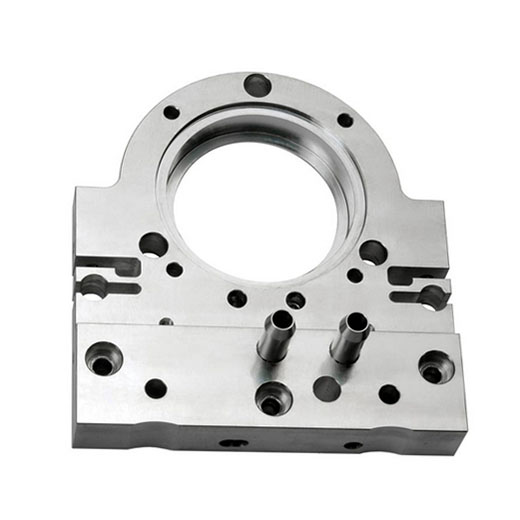 Programming and simulation techniques: Operators need to master the programming skills of five axis CNC machine tools, and be able to write correct machining programs based on part drawings and machining requirements. At the same time, using simulation software to simulate the machining program can check the correctness of the program and avoid errors in actual machining. Workpiece installation and positioning technology: Proper installation and positioning of workpieces are key steps in five axis machining. Operators need to choose appropriate fixtures and positioning methods to ensure that the workpiece is stable and does not move during the machining process. Tool selection and replacement technology: Based on the processing materials and requirements, operators need to choose suitable tools. During the machining process, as the tool wears out, the operator also needs to master the technique of replacing the tool to ensure machining quality and efficiency. Machine tool operation and maintenance technology: The operation and maintenance of five axis CNC machine tools are important links in the machining process. Operators need to be familiar with the various functions of the machine tool and be able to operate it correctly and safely. At the same time, regular maintenance and upkeep of the machine tool can extend its service life, ensure machining accuracy and stability. Quality control and testing technology: In the five axis machining process, quality control and testing are essential links. Operators need to master relevant detection techniques and tools, such as measuring instruments, to monitor and detect key parameters in real-time during the machining process, ensuring that the machining quality meets the requirements. Exception handling and emergency technology: During the machining process, various abnormal situations may occur, such as tool breakage, machine tool failure, etc. Operators need to have the ability to handle these abnormal situations, be able to quickly take emergency measures, and avoid accidents from escalating or affecting processing quality.
Programming and simulation techniques: Operators need to master the programming skills of five axis CNC machine tools, and be able to write correct machining programs based on part drawings and machining requirements. At the same time, using simulation software to simulate the machining program can check the correctness of the program and avoid errors in actual machining. Workpiece installation and positioning technology: Proper installation and positioning of workpieces are key steps in five axis machining. Operators need to choose appropriate fixtures and positioning methods to ensure that the workpiece is stable and does not move during the machining process. Tool selection and replacement technology: Based on the processing materials and requirements, operators need to choose suitable tools. During the machining process, as the tool wears out, the operator also needs to master the technique of replacing the tool to ensure machining quality and efficiency. Machine tool operation and maintenance technology: The operation and maintenance of five axis CNC machine tools are important links in the machining process. Operators need to be familiar with the various functions of the machine tool and be able to operate it correctly and safely. At the same time, regular maintenance and upkeep of the machine tool can extend its service life, ensure machining accuracy and stability. Quality control and testing technology: In the five axis machining process, quality control and testing are essential links. Operators need to master relevant detection techniques and tools, such as measuring instruments, to monitor and detect key parameters in real-time during the machining process, ensuring that the machining quality meets the requirements. Exception handling and emergency technology: During the machining process, various abnormal situations may occur, such as tool breakage, machine tool failure, etc. Operators need to have the ability to handle these abnormal situations, be able to quickly take emergency measures, and avoid accidents from escalating or affecting processing quality.
Hello! Welcome to EMAR's website!
 English
English » »
» »
 Spanish
Spanish Arabic
Arabic French
French Portuguese
Portuguese Belarusian
Belarusian Japanese
Japanese Russian
Russian Malay
Malay Icelandic
Icelandic Bulgarian
Bulgarian Azerbaijani
Azerbaijani Estonian
Estonian Irish
Irish Polish
Polish Persian
Persian Boolean
Boolean Danish
Danish German
German Filipino
Filipino Finnish
Finnish Korean
Korean Dutch
Dutch Galician
Galician Catalan
Catalan Czech
Czech Croatian
Croatian Latin
Latin Latvian
Latvian Romanian
Romanian Maltese
Maltese Macedonian
Macedonian Norwegian
Norwegian Swedish
Swedish Serbian
Serbian Slovak
Slovak Slovenian
Slovenian Swahili
Swahili Thai
Thai Turkish
Turkish Welsh
Welsh Urdu
Urdu Ukrainian
Ukrainian Greek
Greek Hungarian
Hungarian Italian
Italian Yiddish
Yiddish Indonesian
Indonesian Vietnamese
Vietnamese Haitian Creole
Haitian Creole Spanish Basque
Spanish Basque




